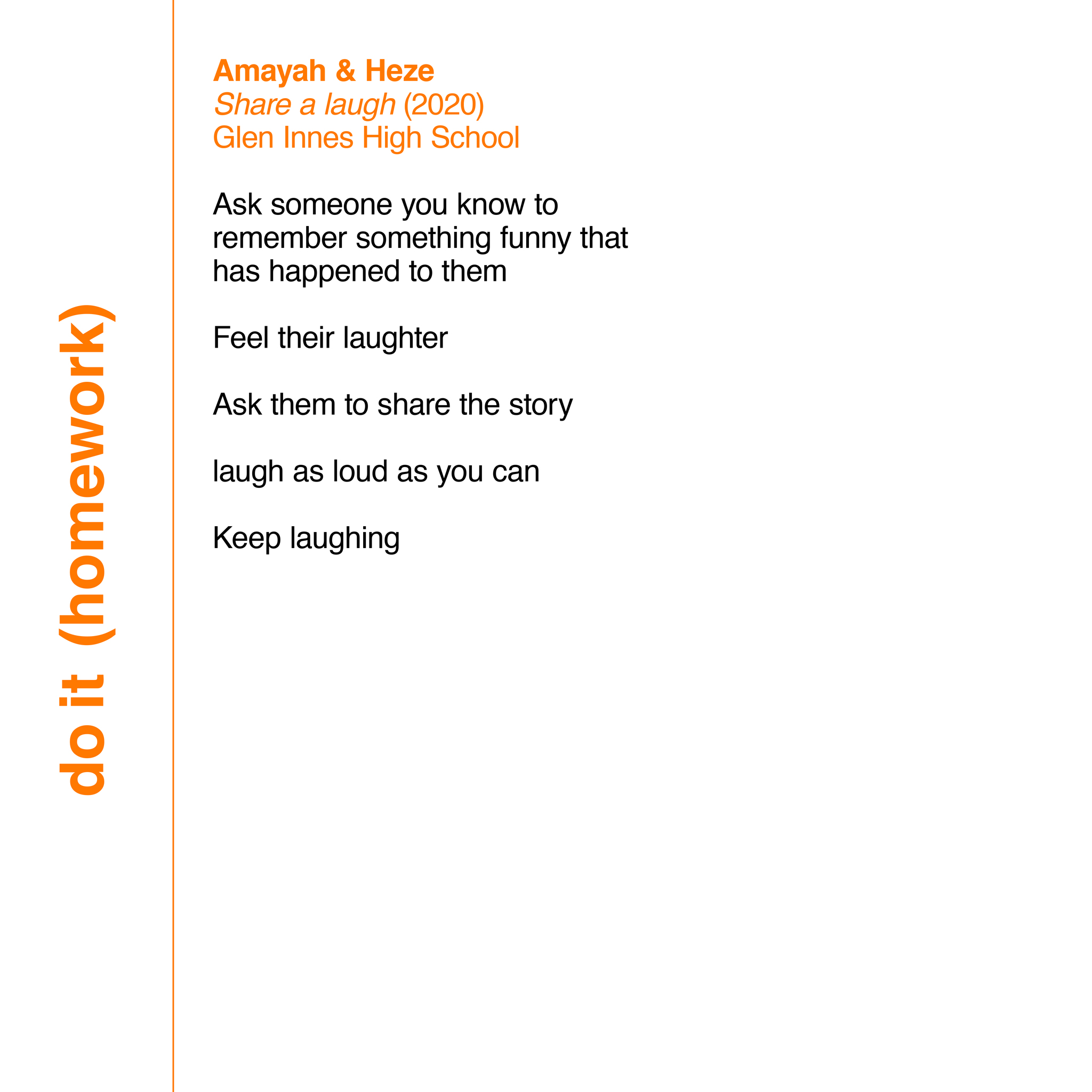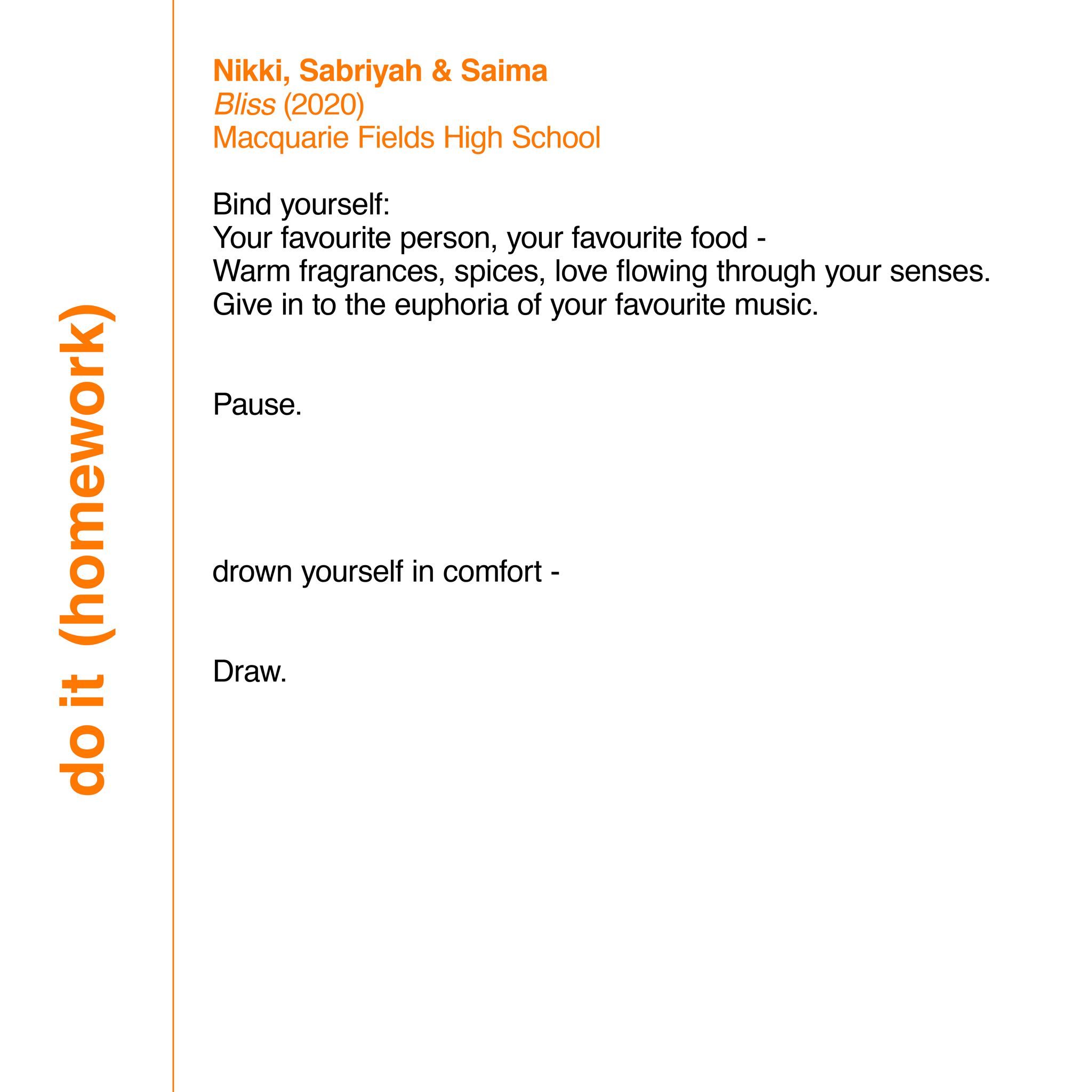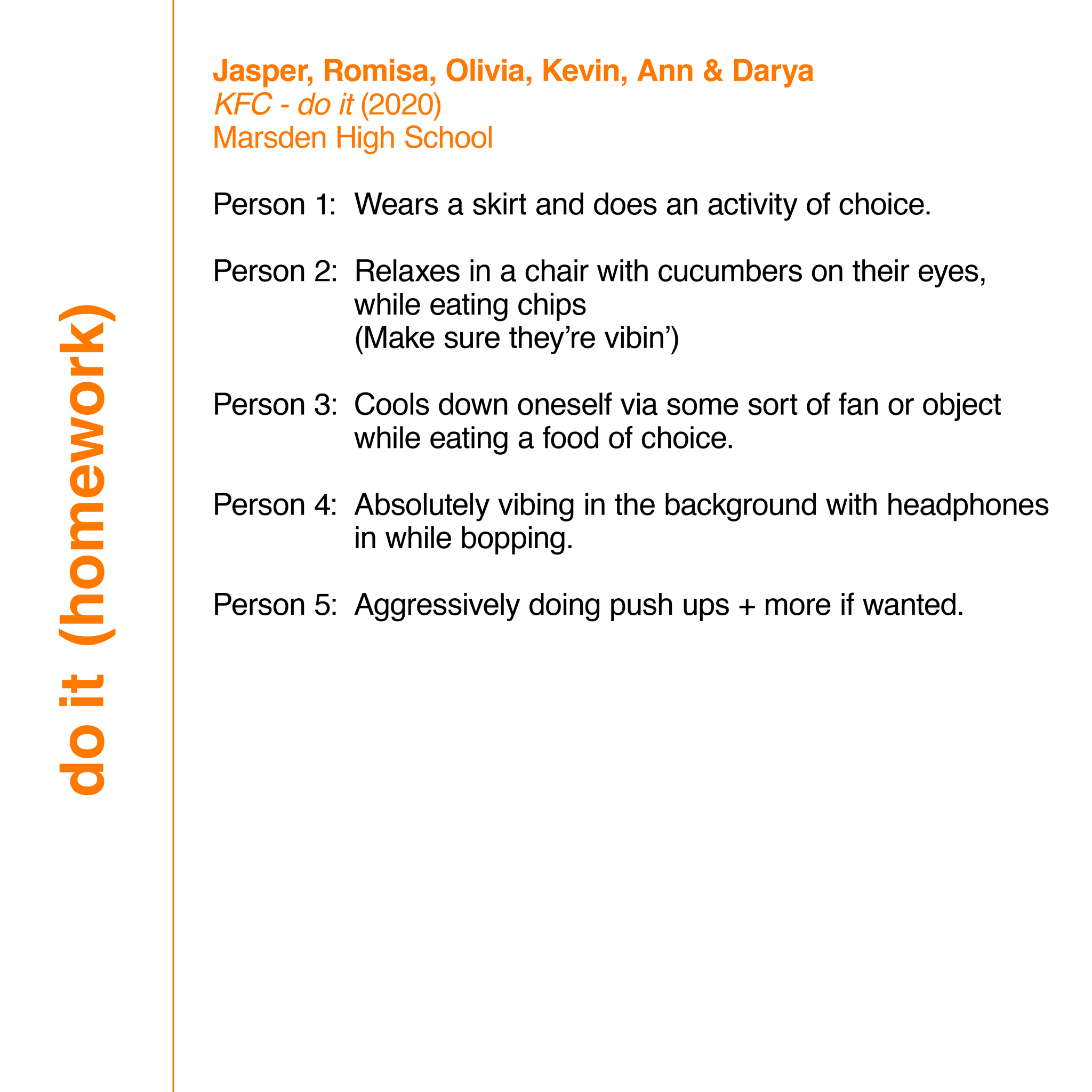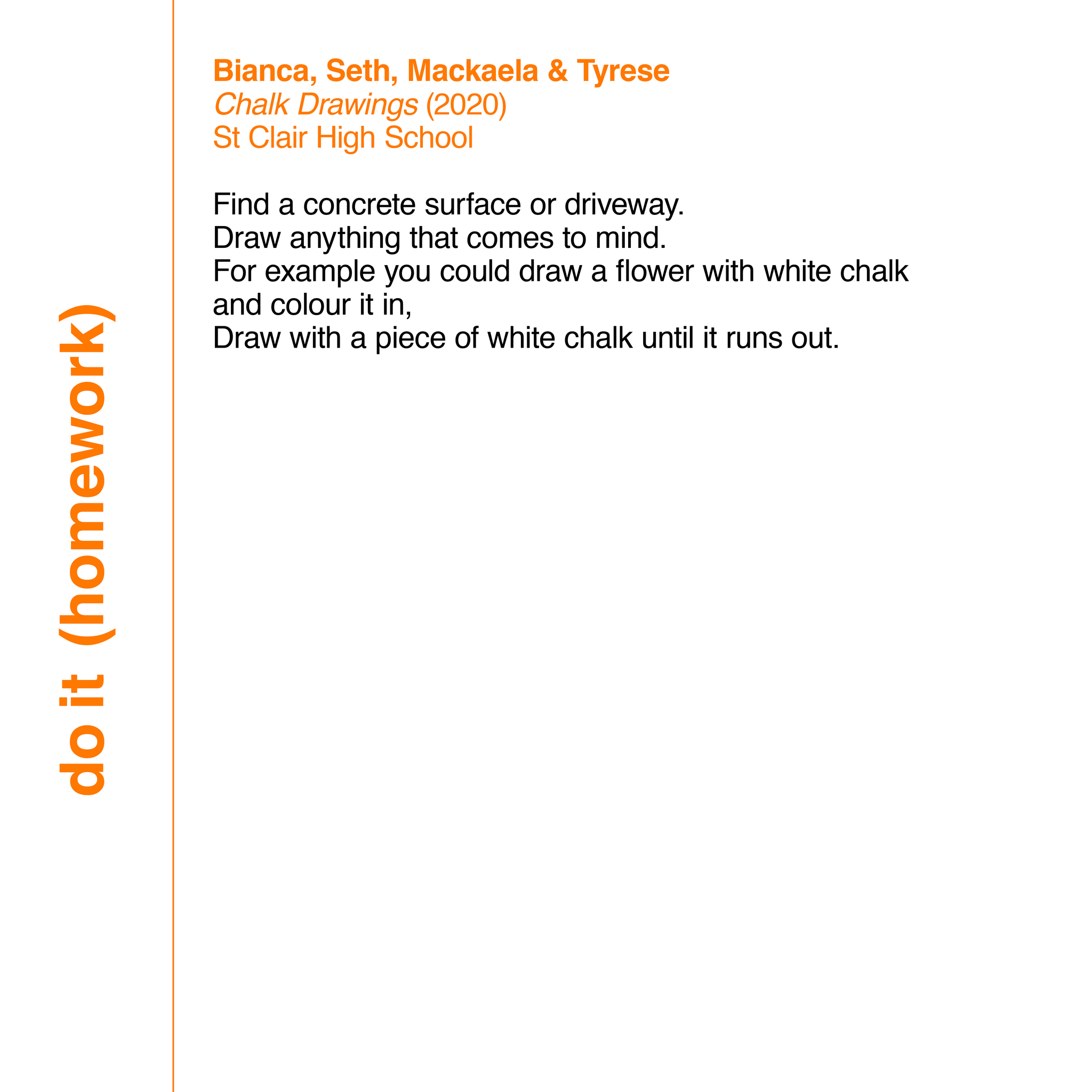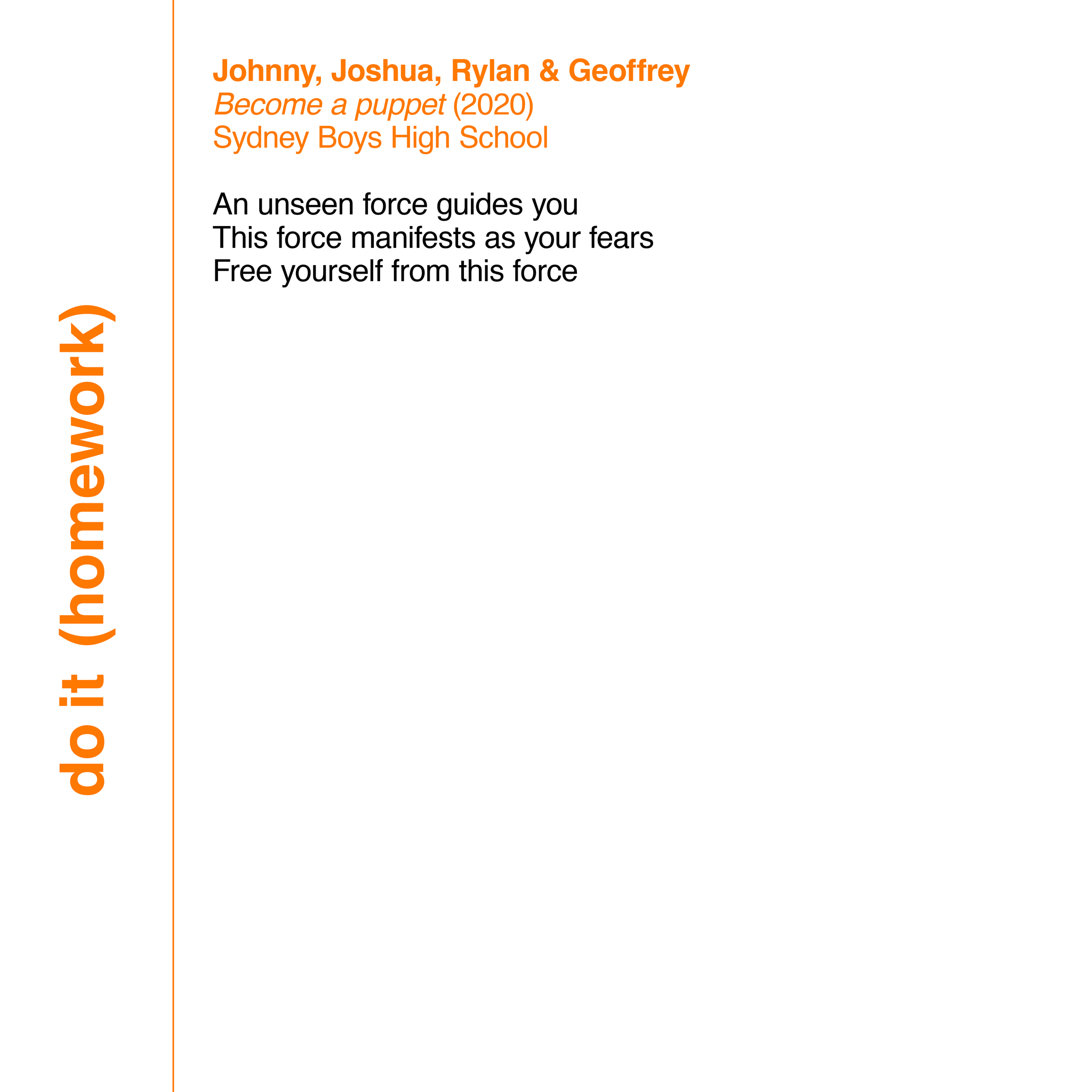These learning activities and programs are designed to help students of all levels explore do it (australia), at home or in class.
Follow newly commissioned instructions created specifically for young people by Australian artists Lauren Brincat, Dale Harding and Amrita Hepi.
Learn more about conceptual art through our hands-on activities and prompts for discussion. Each activity is also available as a downloadable PDF with guides for further research.
Our Extension Program is designed for secondary students to work together in groups to create instructions of their own. For inspiration, view the gallery of student work from schools who participated in our education program do it (homework) 2020.
Contact us to learn more about our education programs.
- Instructions by
- do it (homework)



